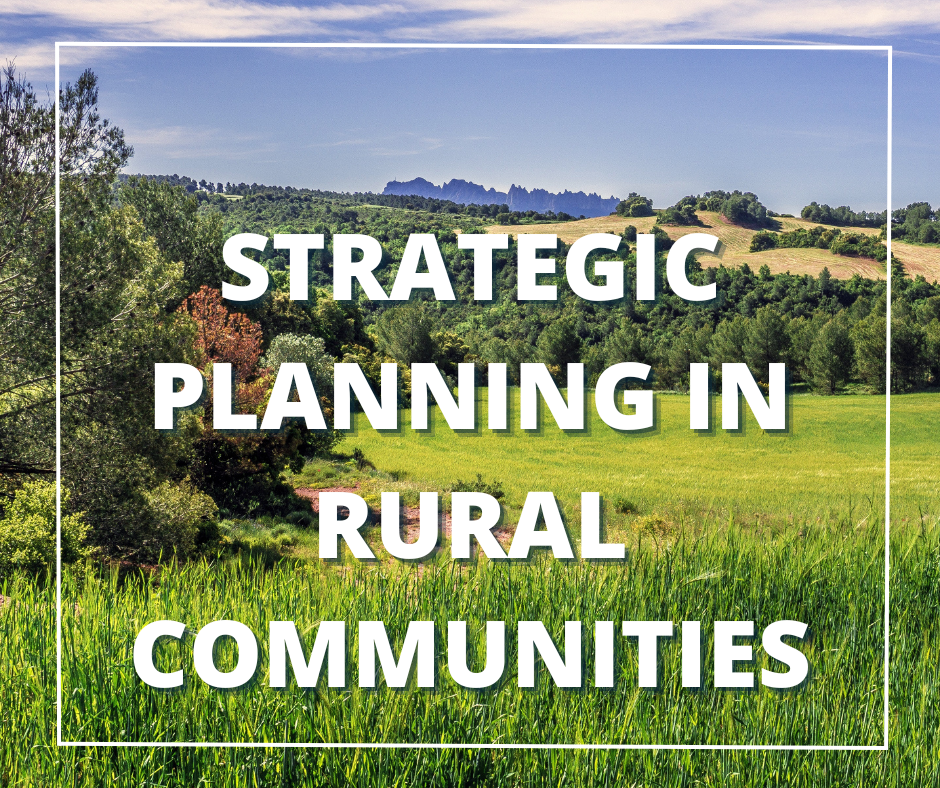
Rural counties often possess untapped potential for economic growth and development with unique strengths and opportunities waiting to be leveraged. Creative EDC recently facilitated strategic plans in Surry and Vance Counties in North Carolina and Newberry County, South Carolina. They are good examples of rural communities proactively working to promote economic growth and development. All three counties face similar economic challenges but also have some common opportunities. In this blog, we explore the similarities between the strategic plans of these three counties and highlight key components.
The strategic planning process included a SWOT analysis, economic and demographic research, and community engagement. In the case of Newberry and Surry Counties, community input sessions were held in each town. Vance County used a community survey and interviews to engage stakeholders. In all projects, businesses were engaged through interviews and a survey. Interestingly, we found the number one reason companies located in Surry and Vance Counties (#2 in Newberry County) is “personal or hometown connection.” This influenced the development of business attraction strategies – more focus on people with a connection to the county.
A key component of the strategic plans is business retention and expansion (BRE). Rural places (all EDOs, really) should prioritize BRE because a greater percentage of new investment and job creation come from existing businesses. By supporting local businesses, these counties promote job growth and long-term economic sustainability. Each strategic plan prioritizes efforts to retain and expand businesses through tailored programs, targeted incentives, financial support programs, and workforce development initiatives.
With labor force numbers slowly growing or declining, it is imperative that rural counties be proactive in talent attraction, retention, and development. By partnering with educational institutions and implementing training programs, these counties aim to create a qualified workforce that meets the demands of a changing economy. Newberry County’s plan calls for a “How to Start an Internship” toolkit to provide a template to businesses looking to create an internship program. Vance County provides free community college to all high school students through different pathways but does not package and promote the opportunity. Surry County has a best practice program – Surry-Yadkin Works – that is recommended to be expanded. Both Surry and Newberry Counties have placed emphasis on career awareness strategies to highlight local career opportunities.
Rural counties often face challenges in raising awareness of their unique assets and opportunities. Surry, Vance, and Newberry Counties are addressing this by prioritizing cost-effective marketing strategies. Prioritizing the website, e-marketing, social media, and other digital outreach can maximize a limited budget. Also, partnering with the region and state on sales trips, events, and international missions leverages scarce local marketing resources.
Small business and entrepreneurship play important roles in economic growth. All three of the counties are focusing efforts on revamping resources for entrepreneurs and small business owners. Key actions organizations can take for small business development are creating and promoting a resource guide for small businesses, creating business “starter-kits,” and supporting entrepreneurial facilities. Surry County has a best practice youth entrepreneurship program – YESurry.
Each county is working on implementation. Blake Moyer, McKinley Perkinson, and Rick Farmer did not let any dust settle on the strategic plan. Surry and Newberry Counties have re-energized the BRE program. Vance County is heavily marketing a new spec building. All are capitalizing on the momentum garnered during the planning process.
Newberry, Surry, and Vance Counties invested in strategic planning because they wanted to build consensus around a roadmap for the future. By conducting thorough analyses and involving stakeholders, strategic planning helps communities identify opportunities, address challenges, and make informed decisions that maximize the impact of their resources. More importantly, it empowers communities to shape their future.